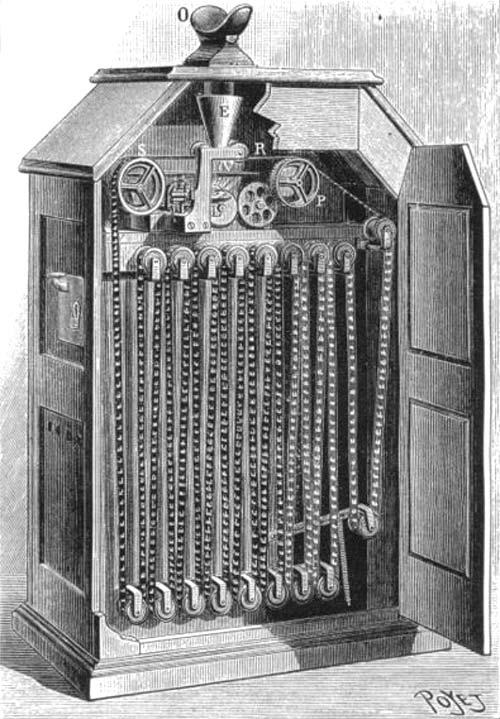The Kinetoscope is an early motion picture camera designed for one viewer at a time to watch a film through a tiny peephole window. On August 31, 1897, Thomas Edison was granted the patent for this invention that he designed with the help of William Dickson.
Fun Facts:
- The Kinetoscope, a groundbreaking invention, is the earliest version of motion pictures. It used a perforated film to project the images, a concept that was revolutionary at the time.
- A kinetoscope prototype was first demonstrated to a gathering of National Federation of Women’s Club members. This gathering was held on May 20, 1891, at the Edison laboratory on May 20, 1891.
- The fully finished version was unveiled on April 14, 1894, at the Brooklyn Institute of Arts and Sciences at the Chicago World’s Fair.
- The first commercial exhibition of the Kinetoscope, held in New York, marked a significant milestone in the history of American cinema. The set, which used ten kinetoscopes, played a pivotal role in shaping the American movie culture we know today.
- The Kinetoscope’s rapid entry into the European market, facilitated by Edison’s decision not to seek international patents, had a profound impact on the device’s development. This move not only expanded the Kinetoscope’s reach but also paved the way for numerous global improvements to the device.
- The Black Maria was the first Edison movie-making studio. The first film shown publicly was Blacksmith Scene, directed by Dickson and shot by Heise.
- Initially, the viewers were charged 25 cents for each ticket, which was quite a high fee.
- After just three weeks, Holland’s New York parlor had made over $1,400 in monthly receipts, a testament to the rapid and widespread success of the Kinetoscope.

